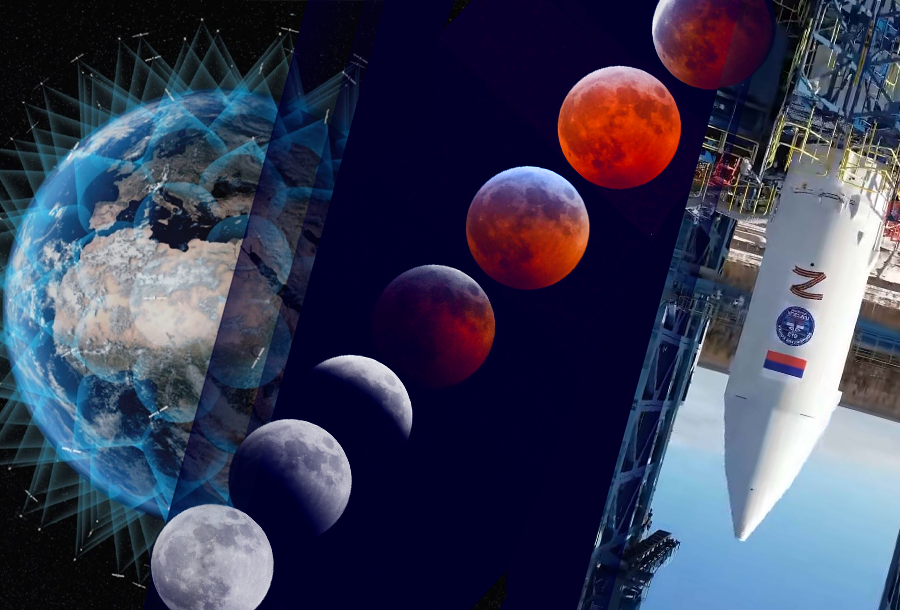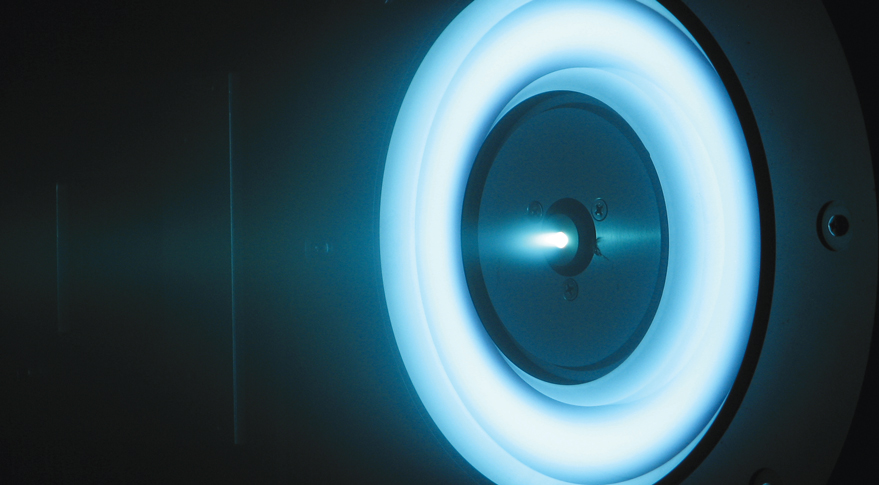Selection of space news for breakfast: Astronomers have observed the longest lunar eclipse in the last 33 years, and scientists have invented a new method for reconstructing the past climate on Mars. A Chinese startup manufacturer of satellite electric propulsions will receive multi million financing.

- Wealthy nations carving up space and its riches, leaving others behind
- “Successfully launched” Russian military satellite will soon fall to Earth
- Growing regions of the Imagery Analytics Market: Industry size, share, opportunities and challenges, development plans, forecast to 2026
- Max Polyakov, founder of Firefly Aerospace intends to invest in military technologies of Ukraine
- Chinese satellite propulsion startup secures funding as country’s constellation projects grow
- Inmarsat agrees to move ground station out of the Netherlands
- Launcher announces customers for first Orbiter space tug mission
- Redwire warns of volatility in commercial space markets
- US and Britain enter commercial spaceflight partnership
- Super Flower Blood Moon of 2022, longest total lunar eclipse in 33 years
- Study reveals new way to reconstruct past climate on Mars
Wealthy nations carving up space and its riches, leaving others behind
Satellites help run the internet and television and are central to the Global Positioning System. They enable modern weather forecasting, help scientists track environmental degradation and play a huge role in modern military technology. Nations that don’t have their own satellites providing these services rely on other countries. For those that want to develop their own satellite infrastructure, options are running out as space fills up. Inequity is already playing out in access to satellites. In the not-so-distant future, the ability to extract resources from the Moon and asteroids could become a major point of difference between the space haves and have-nots. As policies emerge, there is the risk that these inequities become permanent.
“Successfully launched” Russian military satellite will soon fall to Earth
Kosmos-2555 was launched on April 29 by the Angara-1.2 rocket from the Plesetsk cosmodrome. This was the first flight for this modification of the carrier since 2014. According to official reports, the launch was successful. According to satellite spotters, after the launch, Kosmos-2555 performed only one small maneuver, insufficient to seriously change its orbital characteristics. As a result, the device began to rapidly lose altitude. As of May 15, the perigee of the Kosmos-2525 orbit has decreased to 222 km. Judging by the satellite’s inability to raise altitude, it either completely failed, or some kind of accident occurred on board. In any case, this means that in the near future, Cosmos-2555 will burn up in the earth’s atmosphere.
Growing regions of the Imagery Analytics Market: Industry size, share, opportunities and challenges, development plans, forecast to 2026
The Imagery Analytics Market Report covers a worldwide analysis of the industry’s current performance, development and trends of leading players. The report examines future growth prospects, revenue, regional segmentation and opportunities that will appear during the forecast period. Also this report presents the overall market size of Imagery Analytics by analyzing historical data and future prospects.
Max Polyakov, founder of Firefly Aerospace intends to invest in military technologies of Ukraine
According to Max Polyakov, Ukraine can and should step up the development of its technologies that would significantly enhance the country’s security. “I am ready to invest in military and intelligence technologies aimed at strengthening Ukraine’s security,” noted Polyakov. In addition, the businessman expressed confidence that Ukraine should not depend on the delays of international partners or the months-long conclusion of contracts with foreign companies – on the contrary, the country needs to independently create modern weapons.
Market News

Chinese satellite propulsion startup secures funding as country’s constellation projects grow
A Chinese satellite electric propulsion company has secured multi-million yuan angel round financing amid a proliferation of Chinese constellation plans. The company’s main products are Hall thrusters and microwave electric propulsion systems, with an on-orbit test of the latter planned before December this year. Few entities are engaged in propulsion for small satellites in China, but the demand for such systems is apparent.
Inmarsat agrees to move ground station out of the Netherlands
Inmarsat is seeking permission from Greece to move a ground station there from the Netherlands, which wants to sell the C-band spectrum the site uses for maritime safety services to 5G wireless operators.
The British satellite operator previously argued that moving out of the northern Netherlands village of Burum was unnecessary because it was possible its services could share the spectrum band with 5G operators.
However, the company said it is working with authorities in Greece to secure a license following recommendations from an external committee, which was appointed by the Dutch government to find ways to sell the operator’s 3.5 GHz frequencies without interfering with safety services.
Launcher announces customers for first Orbiter space tug mission
Launch vehicle and in-space transportation services company Launcher has filled the manifest for the first flight of its space tug later this year with a mix of commercial and academic payloads.
Launcher announced May 16 that the first flight of its Orbiter vehicle, which will be on SpaceX’s Transporter-6 rideshare mission in October, will deploy satellites for six customers and carry hosted payloads for four others.
Three of the satellite customers are startups developing cubesats: Skyline Celestial, Innova Space and NPC Spacemind. Two others are student cubesat projects at Cal Poly Ponoma and Stanford University. Launcher did not disclose the identity of the sixth satellite customer.
Redwire warns of volatility in commercial space markets
Space technology company Redwire said that while it still sees the commercial sector as its biggest prospect for long-term growth, volatility among its customers may cause delays. Redwire, which went public through a SPAC merger last year, reported revenue of $32.9 million in its first-quarter earnings release May 12. The company had a net loss of $17.3 million and an adjusted earnings before interest, taxes, depreciation, and amortization (EBITDA) loss of $4.7 million in the quarter.
US and Britain enter commercial spaceflight partnership
The United States and Britain entered into a commercial spaceflight partnership agreement Thursday with the aim to launch cheaper, quicker and more streamlined spaceflight operations. Under the agreement, the two nations agree to work together to boost opportunities for British and U.S. companies to launch missions from either countries’ spaceports through reducing red tape and regulatory obstacles, it said. Specifically, the agreement removes duplication for licensing between the two countries for commercial space activities, reducing costs and procedure burdens while seeking to maintain a high-level of safety standards.
Interesting

Super Flower Blood Moon of 2022, longest total lunar eclipse in 33 years
The total lunar eclipse was the longest since 1989. The moon turned an eerie blood-red color in a total lunar eclipse overnight Sunday that was visible to potentially millions of stargazers across four continents. It could be seen, weather permitting, from a large part of the world, covering America, Antarctica, Europe, Africa and the eastern Pacific Ocean.
Study reveals new way to reconstruct past climate on Mars
Australian scientists from Monash University have provided fresh evidence for when high rates of erosion occurred throughout the history of Mars.
Their study determines the timing and rates of sediment erosion and accumulation over Mars’ geologic history in a completely novel way, and for the first time quantifies a measure of the erodibility of each of the types of rocks we see on Mars’ surface. It is significant because we show that the abundance of sands blown by wind into craters on Mars’ surface can be linked to the climate history of the planet, unlocking a new way to understand when in geologic time Mars may have been habitable.
Follow us on Twitter to get the most interesting space news in time
https://twitter.com/ust_magazine
